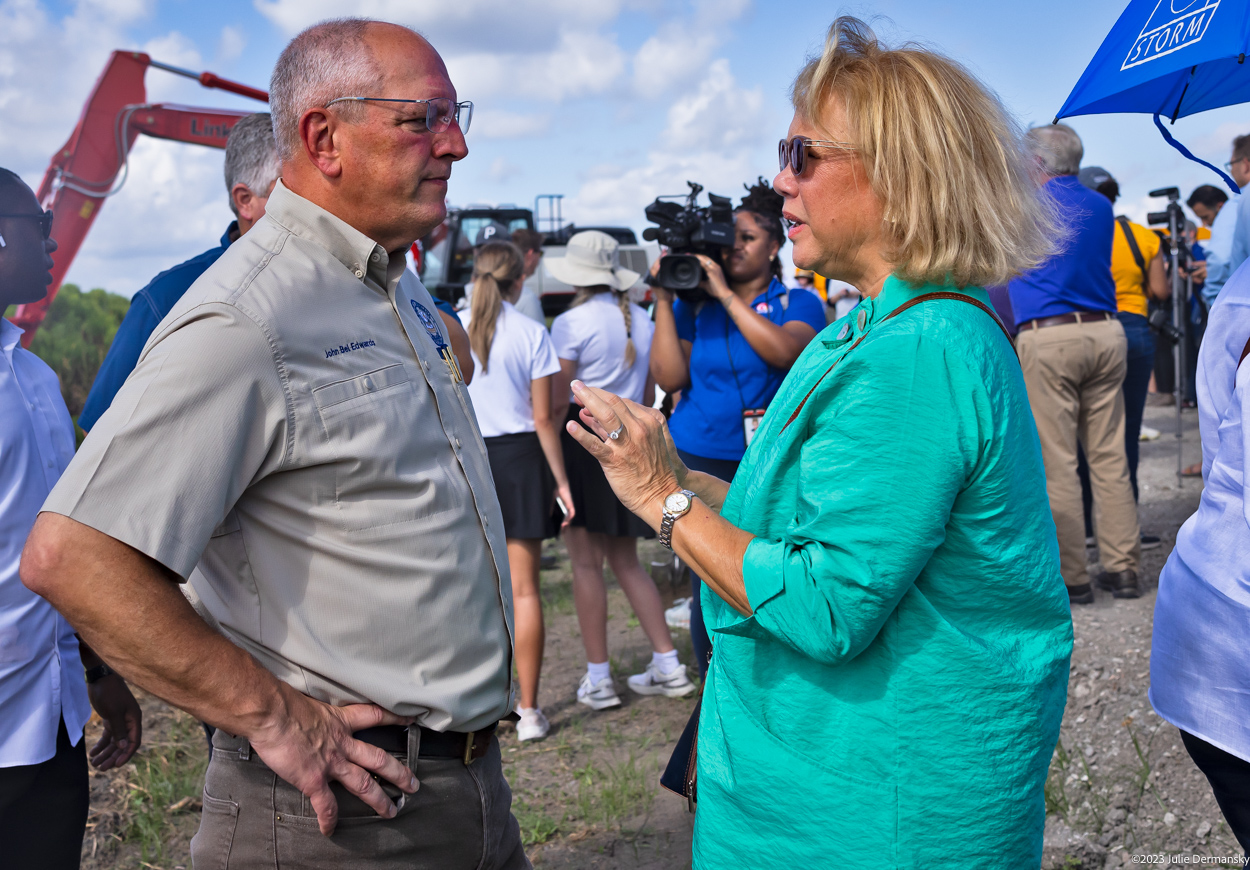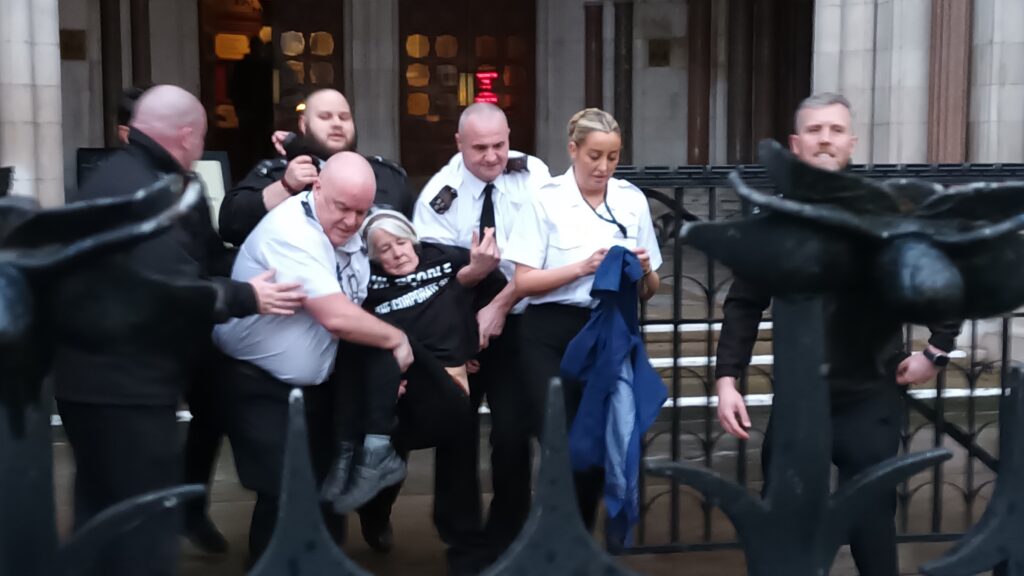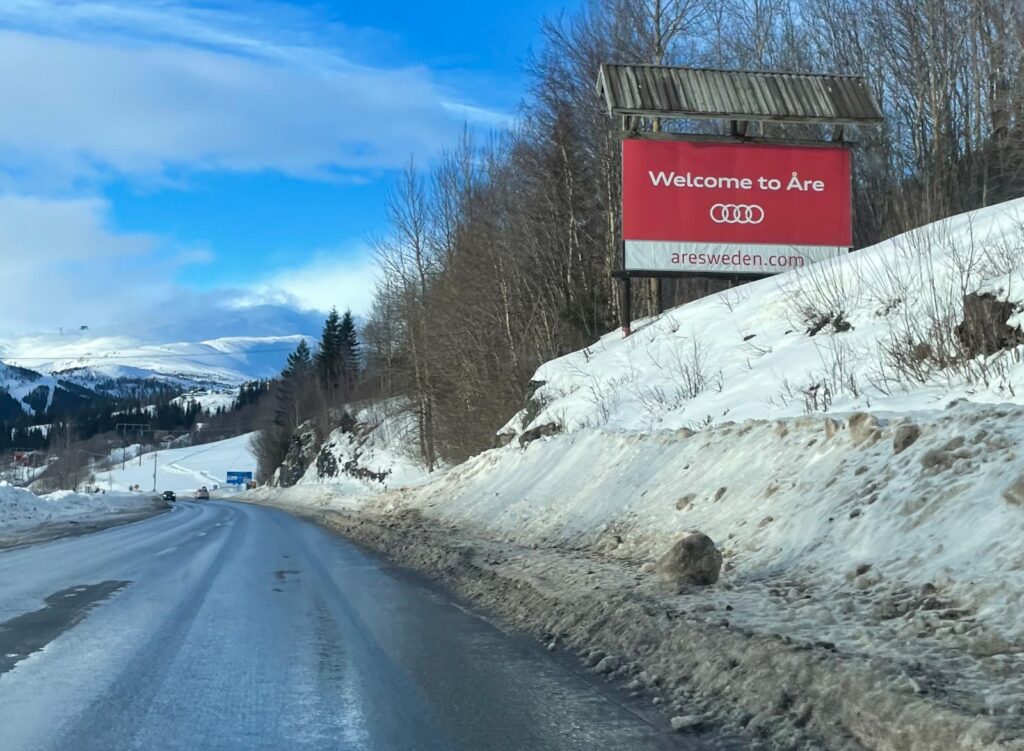“I belong here,” I reminded myself, as I drove toward the checkpoint to gain entry to the groundbreaking event for the $2.9 billion Mid-Barataria Sediment Diversion (MBSD) project, which was about to begin.
After holding up my press pass, I was allowed in, though I was not among the select media invited to the event by the state agency responsible for the project, Louisiana’s Coastal Protection and Restoration Authority (CPRA).
As one of the few reporters to challenge the project’s feasibility, I was not surprised that I was not invited. I felt I should have been, since I signed up to get media advisories from the CPRA about it, but choose not to let that stop me from at least trying to document the historic event.
Therese Walker, managing director for Emergent Method, a public relations firm working on behalf of the CPRA, suggested that it was nothing personal that I wasn’t invited. Walker explained in an email that they were “required to limit the number of attendees to maintain safety protocols on an active construction site.” But that doesn’t explain why I was excluded from being invited to a virtual press conference hosted by the CPRA two days before the event.
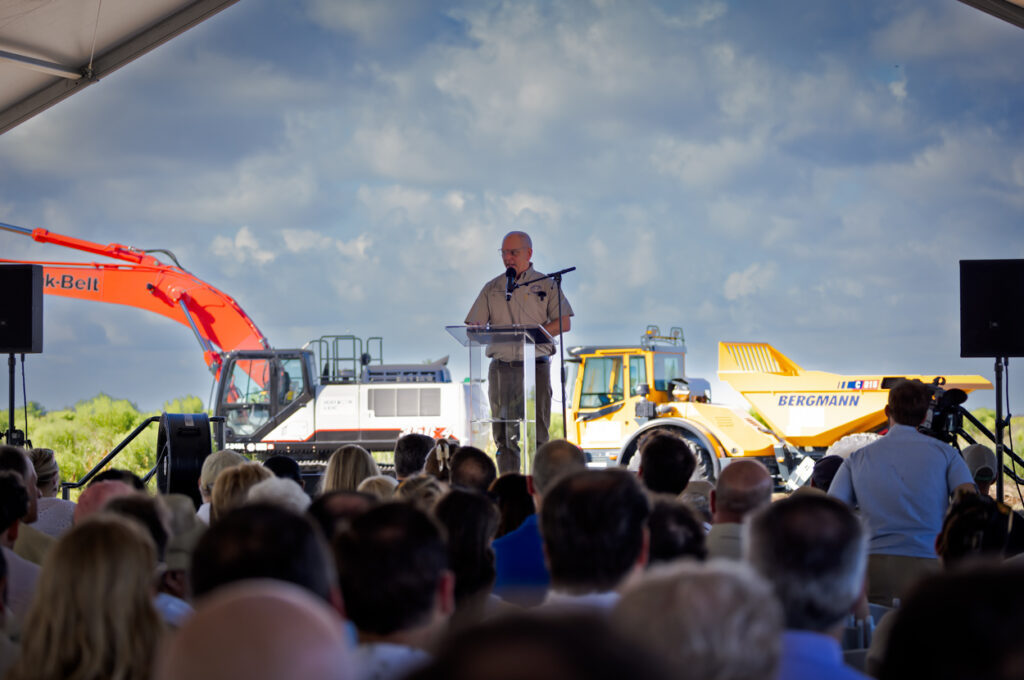
On the morning of August 10, at the site of the event, the only danger I could perceive was the rapidly rising temperature — South Louisiana was in the midst of a heat wave with temperatures soaring over 100 degrees Fahrenheit for a record-breaking number of consecutive days. I saw a few construction vehicles that served as a backdrop to the makeshift stage where speakers, including Louisiana’s Gov. John Bel Edwards (D), gave celebratory remarks before posing with shovels full of dirt scooped up from a pre-dug pile.
Ironically, had I been invited, I wouldn’t have been driven to write this report. Private PR companies seeking to control access to information and public debate on behalf of the government about projects as consequential as the MBSD is dangerous — and is part of a larger concerning trend.
A growing number of these PR and consultancy companies work for clients seeking permits as well as the agencies responsible for issuing them, offering a one-stop-shop for expediting permits, with a team of communication specialists, consultants, engineers, and lobbyists at the ready. Two scoping hearings I attending this year held by the U.S. Coast Guard for floating LNG projects off Grande Isle, Louisiana, were moderated by third-party contractors who offer permit expediting services for industry.
Despite the region’s shrinking wetlands, the government continues to permit new LNG export facilities on the Gulf Coast, and is encouraging hydrogen and carbon capture sequestration developments, though they too will lead to further land loss. Such developments require new pipelines, and constructing pipelines in the wetlands is one of the main drivers of the state’s land-loss crisis.
Thirty miles south of New Orleans is where the MBSD construction will take place. A break will be made on the West Bank of the Mississippi River levee in Plaquemines Parish to allow for controlled releases of the river’s freshwater, laden with sediment and nutrients, through a two-mile-long concrete channel with a gate system re-connecting the river’s flow to the Barataria Basin.
The project’s supporters assert diverting the river to its historic path and unleashing the power of nature will result in the creation of 21 square miles of new submerged land in the basin’s wetlands over the next 50 years. This new land will create a natural barrier that will help protect the New Orleans metro area from storm surge, project proponents say. But scientist point out that the modern Mississippi River isn’t the same as it was 100 years ago — its land-building sediment load has been degraded due to the manmade water controls, and nutrient concentrations in the water are much higher. The project’s planners acknowledge that when the polluted river water is introduced into the basin’s brackish saltwater environment, increased initial land loss will occur as fresh water kills some of the marsh grass that holds the land together; however, a study determined that the land loss could be more substantial than the modelling for the project reflects.
While there is consensus that protecting Louisiana’s coast is necessary — where subsidence, extreme weather, sea level rise quickened by climate change, and the oil and gas industry have all damaged wetlands — there is growing pushback against claims by the CPRA and its supporters that without the MBSD much of the state’s southern coast will cease to exist by the end of the century — as if no other solution is possible.
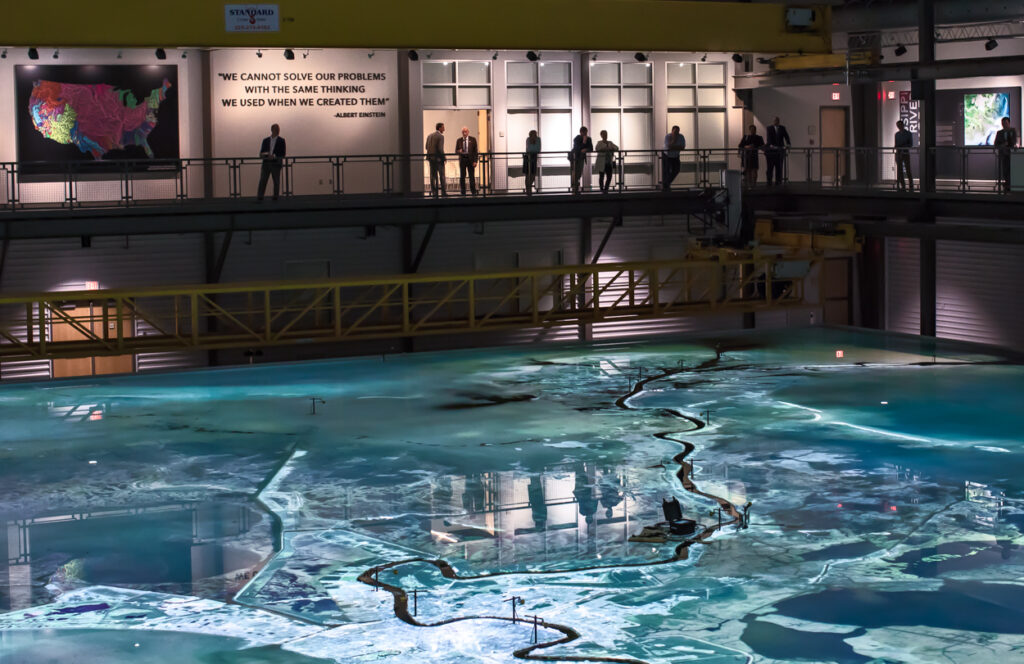
The diversion project lies at the intersection of two crises: the state’s alarming coastal land-loss rate and the essential threat of climate change. This makes it ripe for disaster capitalism, a phrase Naomi Klein coined in her book “The Shock Doctrine: The Rise of Disaster Capitalism.” Following a destabilizing event, funding is made available with little debate for projects the public is told that will fix or mitigate issues that actually advance corporate interests.
In an op-ed about disaster capitalism, Klein pointed out that some of the same companies that profited off the Iraq war — Bechtel, Fluor, Halliburton, CH2M Hill, and Parsons — also profited in New Orleans after Katrina. CH2M Hill, now owned by Jacobs, is playing a role in the diversion project, as one of the many firms contracted by the CPRA. Those same companies, some of which have new names after being acquired, are all now also positioned play a role in the hydrogen and CCS market — an unsubstantiated climate solution that is being heavily unwritten with public funds.
With billions on the table to combat the state’s land-loss crisis from restoration settlements funds from the BP oil spill, and billions more from the federal government to combat climate change, the disaster capitalist vultures are circling. Attending the groundbreaking offered me a peek at those utilizing a revolving door between public and private sector jobs allowing them access to the loot. Among the couple hundred attendees were government officials and an army of consultants, lobbyists, and PR specialist who service the oil and gas industry, at the ready to claim a piece of the pie.
The CPRA was born in the aftermath of Hurricanes Katrina and Rita, and tasked to come up with a plan to save the state’s rapidly eroding coast. It hails the MBSD project as a key element of its $50 billion master plan to do just that.
After the Army Corps of Engineers awarded key permits for the MBSD project on December 19, 2022, two nonprofit organizations entrusted with funds meant to reverse environmental damage caused by the 2010 BP oil spill made funding available for the project. Federal and state trustees approved $2.26 billion from the Deepwater Horizon settlement to be spent on the project, and the National Fish and Wildlife Foundation (NFWF) granted an additional $660 million from fines assessed to BP and Transocean for their roles in the disaster.
The revolving door not only goes from the public sector to the private sector, but also to nonprofits supported by industry: The CEO of the NFWF, Jeff Trandahl, served on Capitol Hill for 23 years before joining the organization. Trandahl’s salary and compensation in 2022 exceeded $1.5 million.
My ears perked up when Bren Haase, the current executive director of the CPRA, profusely thanked Eric Beightel, the head of the Federal Permitting Improvement Steering Council established in 2015. I hadn’t heard of that agency before, but have noticed a growing effort to speed up the permitting process for projects that stand to benefit from federal funding made available to tackle the climate crisis, especially related to hydrogen production and carbon capture sequestration hubs.
Beightel opened his remarks by taking a self-depreciating swipe at the long name of the commission and told the audience it should regard him as the quarterback of permitting.
He also illustrates the revolving door from industry to government: Before Biden appointed him as the nation’s most powerful permit fixer, Beightel worked as an advisor and environmental strategist at HDR, an engineering consultancy firm. And HDR has done extensive work on the project for the CPRA and is also a client of Emergent Method.
In a release celebrating Beightel’s appointment, HDR boasted how its former employee “worked with clients to identify where and how public sector infrastructure agencies and private enterprises could leverage the new regulations and funding.” It also described how the company provided guidance on behalf of the firm’s clients — which include CPRA and several fossil fuel companies — to Congress and federal agencies to influence legislation, including the Infrastructure Investment and Jobs Act.
The company has a history of trying to steamroll opposition. HDR was in the hot seat in 2021 when a Vice investigation showed that the firm, on behalf of the government, monitored the public and private social media accounts of activist groups who opposed its plans to build jails and highways.
A document HDR had on its site was removed after Vice’s article shed light on the firm’s “social listening” program, which “provides 24/7 monitoring of social media platforms to determine trends and key influencers and identify or mitigate risk,” according to Vice.
According Emergent Method, which does work for CPRA and other state entities that I have been critical of in past DeSmog reporting, including the Department of Natural Recourses and the Office of Community Development, HDR is not working for the CPRA directly now but is doing work for one of the companies overseeing the project.
HDR played a major role in the project early on. CPRA commissioned the firm to do the preliminary design of the project. At that time, HDR hired Emergent Method (then called Spreyer Consulting) to handle the public involvement on the project.
In response to my question regarding the CPRA’s expenditures on any form of monitoring social media posts or surveillance of those opposed to the project — and who was tasked to do that — Emergent Method responded for the agency, like they did with the rest of my questions.
“Social media is an important communication tool used to both share and receive information as a part of the project’s Outreach & Engagement strategy and CPRA’s overall O&E efforts. The project team monitors a large range of media, including TV, radio, digital/social, and print, to ensure accurate and timely information related to the project is shared with all stakeholders. This is standard and best practice for outreach strategies for large scale infrastructure projects across the country,” Therese Walker said in an email.
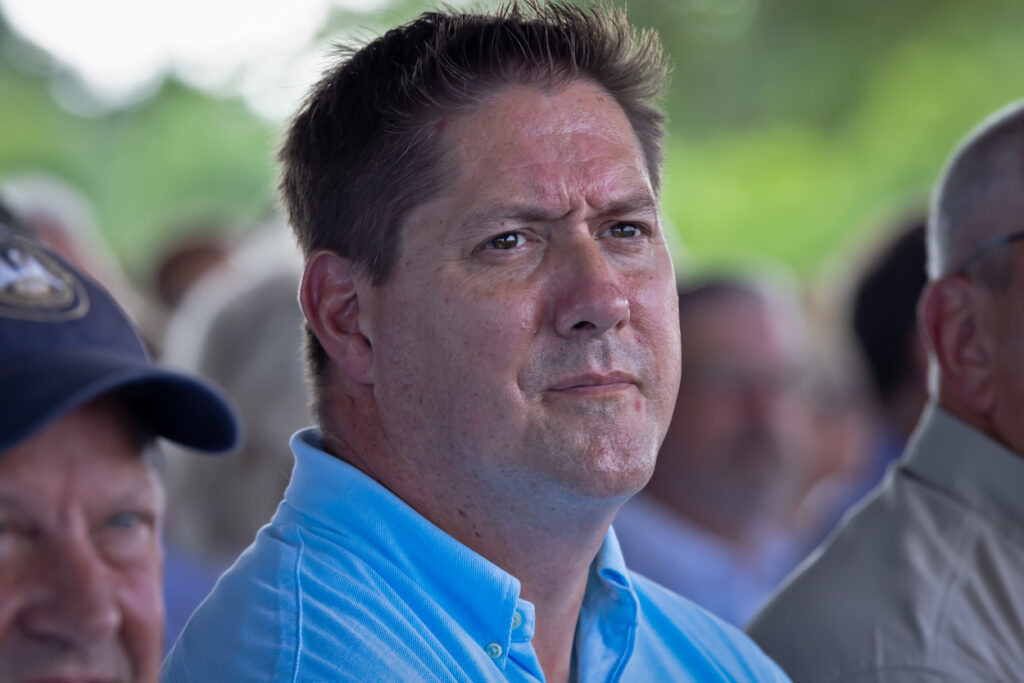
Echoing the Biden administration’s talking points related to combatting the climate crisis and environmental racism, Beightel asserted that the project will work to protect vulnerable communities in Louisiana from climate change.
Those remarks are an example of deceptive cherry picking of information related to the project that communication specialists spin to counter any criticism of it. The Environmental Impact Study prepared on behalf of the U.S. Army Corps of Engineers by GEC, a firm that offers engineering and consulting services, states that while there would be a positive impact of decreasing storm-related surge for communities in the greater New Orleans area, it would create increased flooding for communities directly south of the project in lower Plaquemines Parish that are home to minority populations. The report also concluded that the project will create economic hardship for those in the fishing industry who rely on the Barataria Basin, one of the country’s most productive estuaries. This is because the polluted fresh water entering the salt water environment will kill off most of the brown shrimp and oysters, as well as most of the Bottlenose dolphin that live there. Though the dolphins will suffer, the project’s supporters argue they shouldn’t be there — before the levee changed the basin’s environment, it supported species that thrive in freshwater habitats which will return to the basin thanks to the diversion.

GEC’s objectivity was called into question when Johnny Bradberry, a former chairman of the CPRA, was appointed as the firm’s president in 2019. And the firm recently welcomed Chuck Carr Brown, who resigned as Secretary of Louisiana’s Department of Environmental Quality (LDEQ) in March this year. LDEQ faced a harsh rebuke by the EPA before his departure, and was subject to an investigation for alleged Title VI violations related to the agency’s dealings with minority fence-line communities in Cancer Alley.
But despite the negative impacts identified in the EIS, including initial land loss of the basin’s wetlands from the diverted water that will occur in the project’s first few years, the Army Corps determined the project will do more good than harm, as stated in the permit it issued on December 19 last year.
Critics question the logic of the Army Corps’s authority over such projects. At a public meeting held by the CPRA in 2021, Acy Cooper, head of the Louisiana Shrimp Association, said he blamed the Army Corps for what he describes as the mess at the mouth of the Mississippi River. Where the river’s polluted water enters the Gulf there is rapid land loss and a growing dead zone.
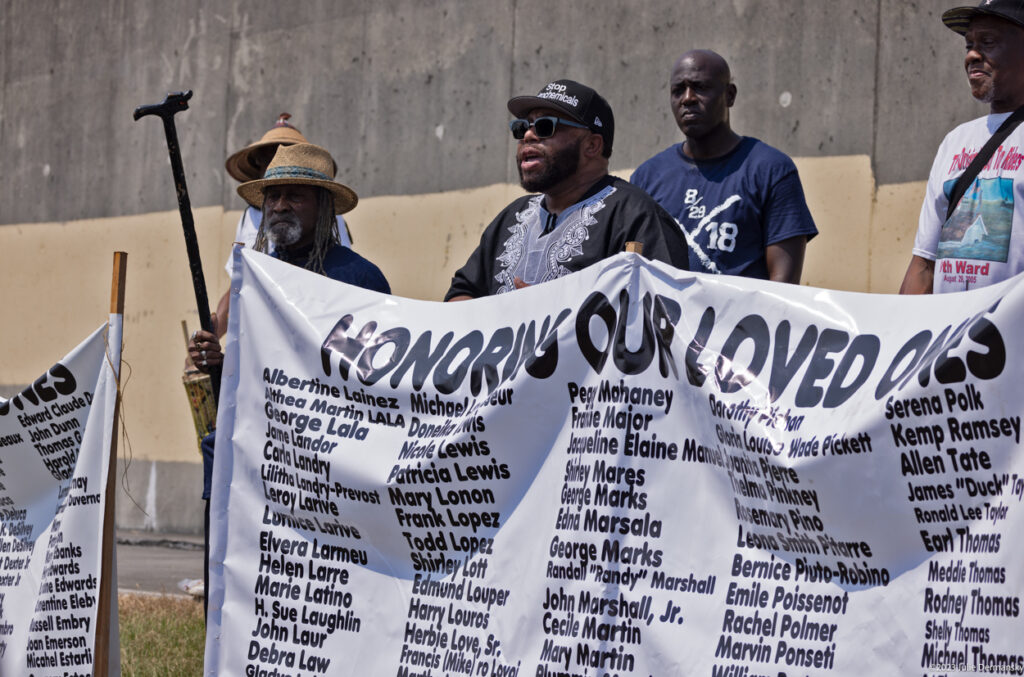
Others point to the Army Corps’ failure to maintain the Mississippi Levee system in New Orleans. At the 18th annual commemoration of Hurricane Katrina, held on August 27 this year at the site of the breach in the Industrial Canal levee in the Lower Ninth Ward of New Orleans, Rev. Lennox Yearwood Jr., president and CEO of the Hip Hop Caucus, reflected on the Army Corps’s role in the disaster. Before the storm, while serving as the deputy director of the Louisiana State University Hurricane Center, Ivor Van Heerden had shared concerns about New Orleans’s vulnerability to flooding with the Army Corps. These concerns were ignored and Heerden was let go after Katrina; he now works as a consultant for environmental and community groups pushing back against flawed permits.
Louisiana State University (LSU) Boyd Professor R. Eugene Turner sent highly critical public comments to the Army Corp about the EIS. “The modeling justifying it is incomplete and not trustworthy” he wrote, explaining why he thought it was premature to do the study in the first place, “and the anticipated benefits are contradicted by empirical data from three large diversions operating for decades.”
Turner sees the move to fast-track permits as being contrary to the very reason an EIS is required in the first place. In an email to me, he wrote that those studies are done to slow down things to ensure a project’s expected benefits won’t be overshadowed by the harm it could cause.
But at the groundbreaking event Rep. Garret Graves (R-LA), who served as the CPRA’s first commissioner before being elected to office, reiterated the need for permitting reform and illustrated how there is an ongoing drumroll to speed up the permitting process. Graves was recently credited for the inclusion of measures in the Fiscal Responsibility Act that passed in June that weaken protections in the National Environmental Policy Act (NEPA).
That push to redesign the federal permitting process is essential to fossil fuel companies eager to unlock the billions of dollars the Biden administration has made available for projects meant to expand the hydrogen fuel market in tandem with carbon capture sequestration, that, much like the diversion project, will have significant environmental impacts.
Unsurprisingly, Graves downplayed the ecological damage the diversion will have in prerecorded remarks that were played at the event, stating, “If I have to choose between moving the people or moving the fish, I choose the fish.”
That statement irked fishermen who live in Plaquemines Parish, and Mitch Jurisich, one of the parish councilmembers. On a call, Jurisich explained that it implies that project will move the shrimp, oysters, and bottlenose dolphin rather than kill them. He fears that his constituency, which relies heavily on the seafood industry, will be forced to move since they will no longer be able to make a living.
However, supporters of the project have a comeback for statements like this too. Those commenting at the ceremony pointed out that the basin’s estuary is already imperiled, and the community will be forced to adapt regardless. And while CPRA representatives patted themselves on the back for getting feedback from stakeholders who will be negatively impacted by the project, none of those stakeholders were invited to the event, including Jurisich.
Jurisich and Copper see this as bad form. The Governor and head of the CPRA know them, they told me, and know they wouldn’t make a scene if they had gone to the event. They both pointed out that the event was held a couple days after shrimp season started, making it less likely that those in the fishing industry would come, invited or not. But Cooper feels it was wrong for the CPRA to deny a representative like himself to be present, so at least the media would have been able to easily hear from one of the stakeholders the CPRA referenced.
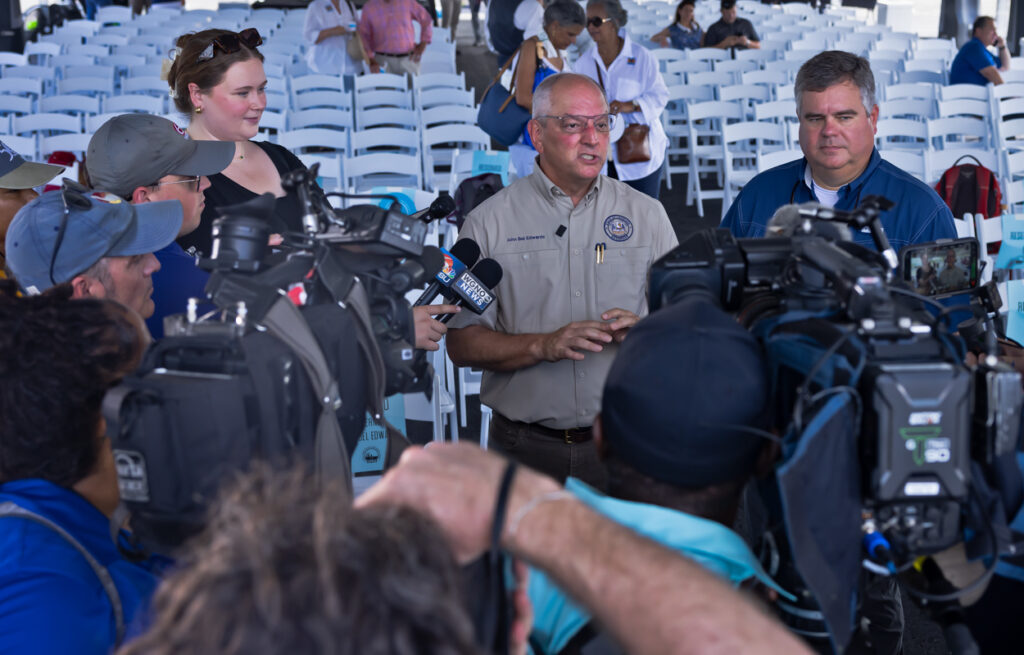
During a brief impromptu press gaggle, I asked Gov. Edwards and Haase of the CPRA why information about the event wasn’t spread more widely. My question was met with blank stares. “I know nothing about that,” Edwards said, before a representative from Emergent Method cut him off, pointing out that a media advisory was sent the day before, (which wasn’t sent to me) as well as one a half an hour before the event (which I received a half hour after the event began).
I later found the governor’s office sent an advisory the day before the event that stated it was open to all media, contradicting all of the advisories from the CPRA which stated it was invitation only. Though I have received advisories from the governor’s office for many years, they stopped sending them to me earlier this year.
Instead, it was through the Environmental Defense Fund (EDF) that I first learned the details about the MBSD’s groundbreaking event. The nonprofit offered me a freelance gig to photograph the event for them, which I graciously declined. Shortly after, I learned that EDF has launched its own media platform, Vital Signs, which it hails as a source for investigate journalism.
I wondered how independent this platform will be, given that EDF has received funding from the Walton Family Foundation. The foundation, which was established by the family that owns Walmart, supports the diversion project.
EDF is not alone — some of the other nonprofits that Walton has given grants to also publish glowing content about the project, including the National Wildlife Federation and the Audubon Society. The foundation also regularly gives grants to media platforms that largely report favorably about the project, including Louisiana’s paper of record, the Advocate; NPR; and the Associated Press.

While the Walton Family Foundation’s platform reflects a commitment to environmental conservation, Cooper and others in Louisiana’s fishing industry don’t buy it. They believe that the collapse of their industry would benefit Walmart, edging the company closer to having a monopoly on the global seafood market. Simultaneously, their absence would please the fossil fuel industry because without a fleet of fishing vessels on the water, there will be little chance of outsiders documenting and or reporting any issues that arise from oil and gas developments off shore.
After the speeches concluded, the action moved from the stage to the pile of dirt where a representative from Emergent Method began positioning key people for the photo op.
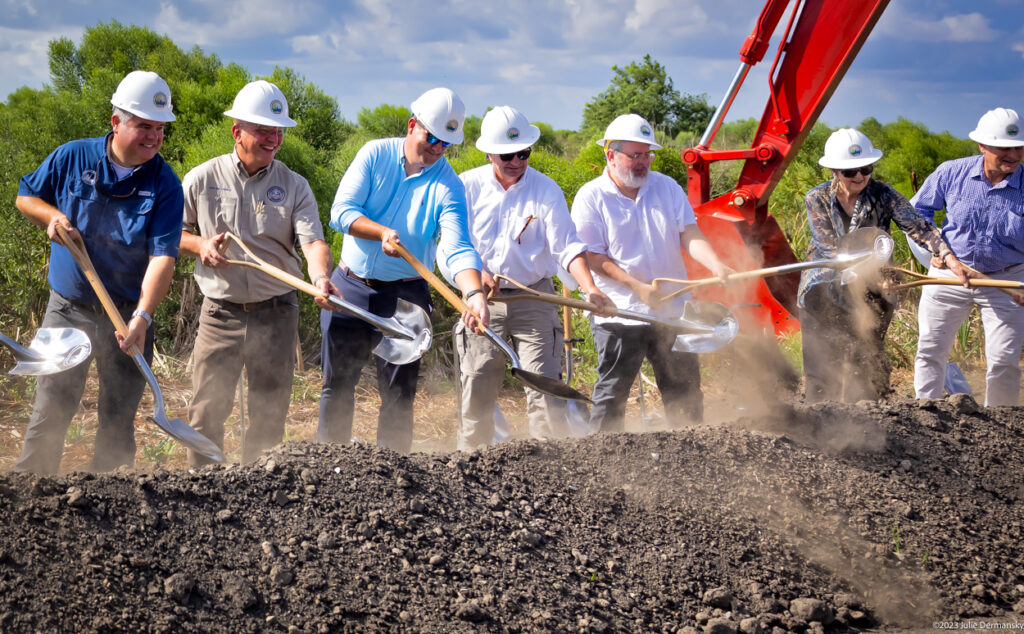
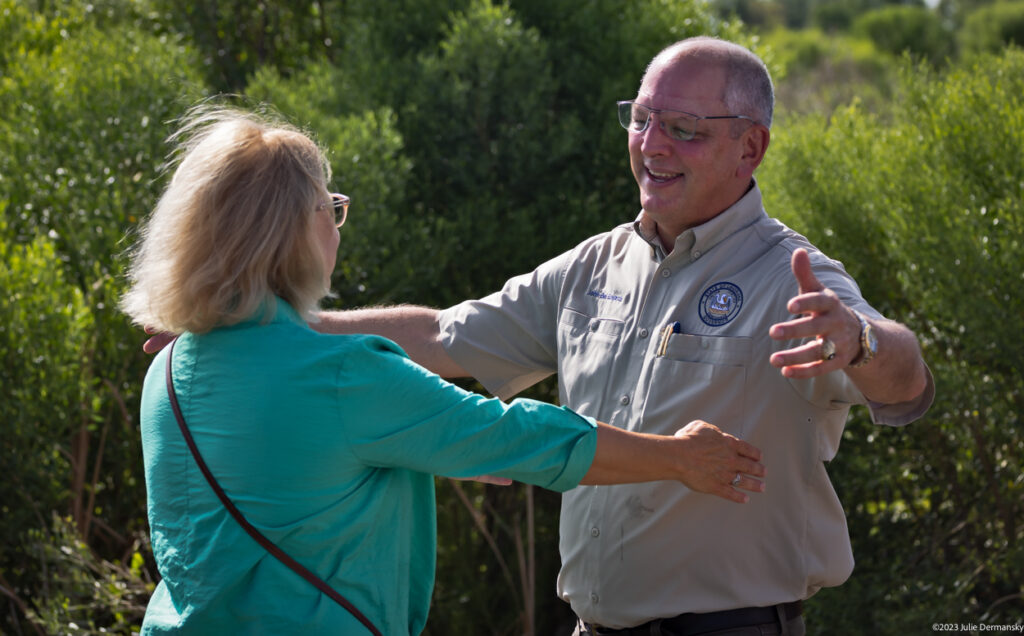
Former Senator Mary Landrieu, who works as a lobbyist, caught my attention. She jockeyed for a shovel and a spot in the lineup, trying to convince the rep from Emergent Method that doing so would improve the optics as only one woman was given a place in the photo. Although these efforts were rebuffed, she managed to secure two semi-private audiences with the governor before he departed.
Van Ness Feldman, the Washington, D.C.-based lobbying firm Landrieu joined in 2015 after losing a re-election bid for senate, was contracted by the CPRA to help expedite the permitting of the diversion project. Its efforts on behalf of the CPRA resulted in getting Congress to pass a one-paragraph waiver to the Marine Mammal Protection Act that now only requires the state of Louisiana to monitor the diversion’s impact on dolphins instead of protecting them.
Among the attributes of working with Landrieu highlighted on the firm’s site is her ability to “provide clients with high level contacts within the Executive Branch, federal agencies, and state and local governments.” The firm has received numerous contracts from the state since Landrieu came on board.
Not mentioned by firm is that Landrieu’s brother, former New Orleans Mayor Mitch Landrieu, was appointed by Biden to be responsible for coordinating the implementation of the IRA.
Van Ness Feldman recently opened VNF Solutions to help expedite permits for companies seeking to secure funding from the Inflation Reduction Act’s $7.5 billion allotted for projects related to hydrogen fuel and CCS. VNF Solutions offers a team it describes as bipartisan that reflects a quick-moving revolving door.
Clients Landrieu is currently lobbying for include Air Products — which plans to build a blue hydrogen and ammonia manufacturing complex in Cancer Alley in tandem with a CCS hub under Lake Maurepas — and Venture Global, which is building its second LNG export facility in Louisiana just south of the diversion project. Both are reliant on a steady stream of cheap natural gas. Although the oil and gas industry’s supporters continue to claim that natural gas plays a beneficial role in the transition to renewable energy, climate scientists have shown otherwise. While natural gas burns cleaner than coal, the advantage of using it is negated by the methane emitted in its production. Methane, the main component of natural gas, heats the planet at a much greater rate in the short term than carbon dioxide.
Fittingly, Landrieu is also playing a role in rehabilitating natural gas’s image. She co-chairs Natural Allies for a Clean Energy Future, a pro-gas nonprofit backed by fossil fuel companies. The organization has bought hundreds of digital advertisements, as well as TV spots, aimed at shifting public opinion on gas, according to the Guardian.
Landrieu, like others supporters of building a demand for hydrogen, refers to hydrogen ad nauseum as “clean hydrogen.” While hydrogen doesn’t emit CO2 when it is used as fuel, currently it is almost solely produced from natural gas. Hydrogen fuel manufacturing facilities, even when equipped with carbon capture technology create CO2 emissions, and emit methane too. U.S. Secretary of Energy Jennifer Granholm also refers to hydrogen as clean and that the funds in the IRA are meant to help lower the cost by 80 percent within ten years, which she refers to in a video as a “big hairy audacious goal.”
The idea that it will be possible to create large-enough quantities of truly clean hydrogen fuel from water and renewable energy is magical thinking — but it’s allowing Landrieu and other boosters to give natural gas a new lifeline.
Similarly, the billions earmarked for the MBSD based on its projected land-building ability is a risky gamble.
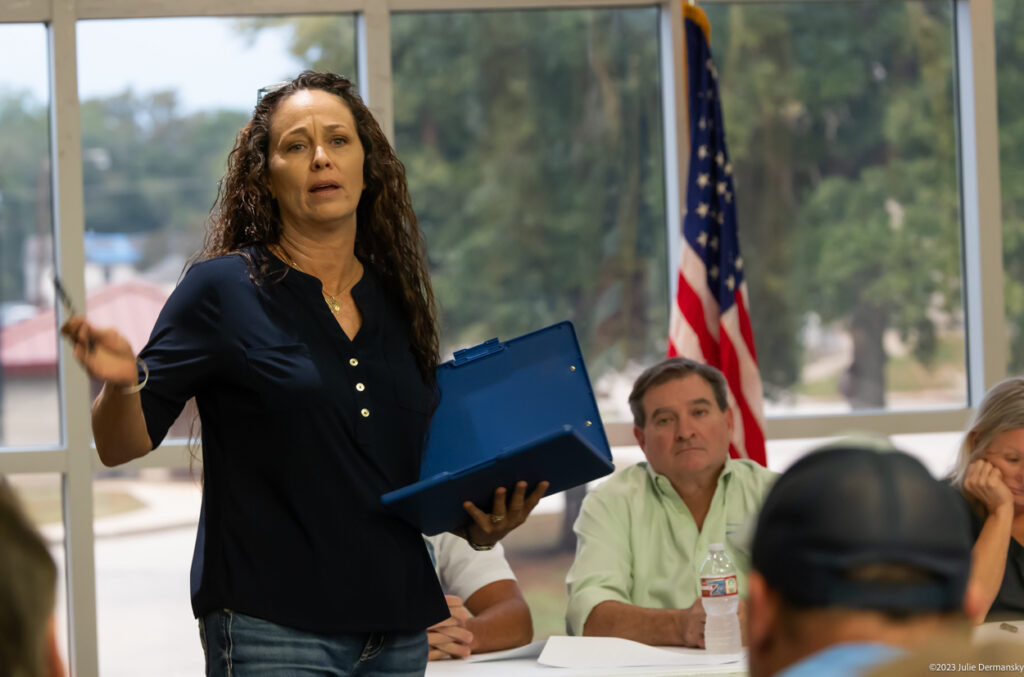
Plaquemines Parish resident Kindra Arnesen, who runs a seafood harvesting business, has been a fierce advocate for her community since the BP oil spill. She warned the CPRA that for those in her community who built back after Hurricane Katrina and bounced back from the BP oil spill, to have their livelihoods threated by the diversion project is shattering. She has attended meetings about the project all over the state and in Mississippi, along with others in her community, to make sure there is someone pointing to the holes in CPRA’s narrative.
Arnesen concurs with comments Turner wrote to the Army Corps regarding the EIS that point out “proven alternatives to build land are not discussed, which would increase wetland area faster and for a much lower cost per area.” For years now she has been telling journalists covering the project, myself included, that anyone who bothers to ask a few questions about this project and follow the money will quickly see that it is a boondoggle.
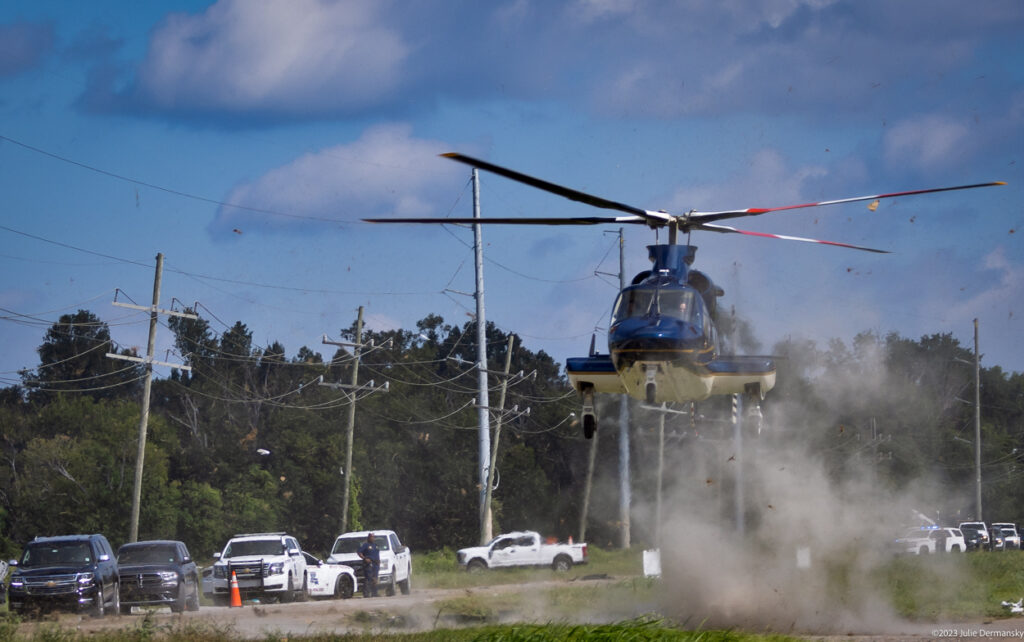
The morning of the event was heartbreaking for her. For the governor to show up in Plaquemines Parish without announcing his visit to anyone that will be negatively impacted by the project, was a harsh reality to take. “After he posed with his foot on a shovel and started to dig the grave of the commercial fishermen that live, eat, survive out of the Barataria Basin,” she said, he added insult to injury by having a helicopter land in the middle of the Highway 23 to whisk him away, bringing traffic to a standstill. The road is the only one that leads to her community — and those who use it are already subjected to endless traffic delays due to the construction of Venture Global’s LNG export facility a few miles south of the site. There is ample land that could have been utilized for a helicopter landing instead of inconveniencing her community.
Right after the governor’s departure, Arnesen got the news that one of the members of her community reliant on the fishing industry took his life with a gun while the event was going on. While she can’t say that the groundbreaking was the final straw for this individual, she warned the CPRA at a June 2021 meeting that when the diversion destroys her community’s prospects of being able to earn a living, it will create a mental health crisis.
Subscribe to our newsletter
Stay up to date with DeSmog news and alerts


